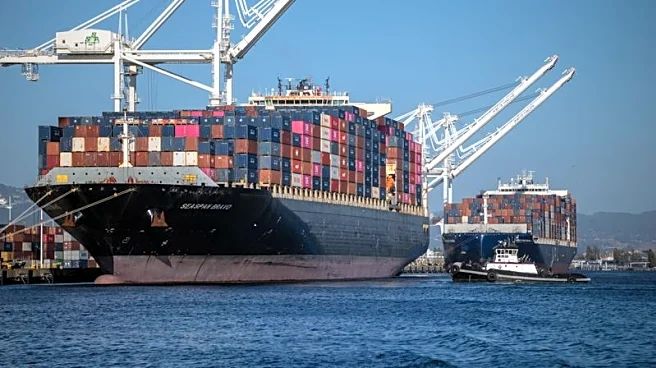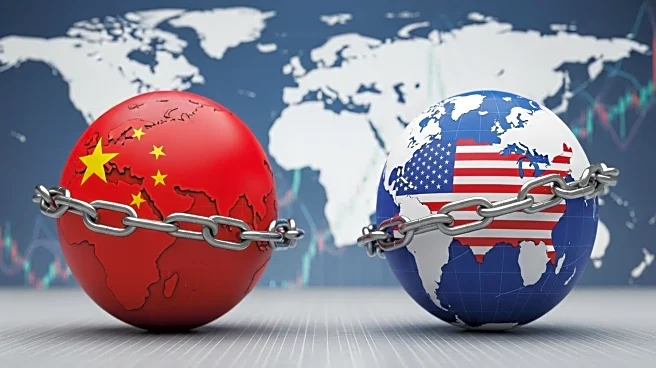What is the story about?
What's Happening?
Global shipping companies continue to place significant orders with Chinese shipyards despite new U.S. port fees aimed at countering China's maritime dominance. According to a report by the Center for Strategic and International Studies (CSIS), Chinese shipyards captured 53% of global ship orders by tonnage in the first eight months of 2025. This follows the U.S. Trade Representative's (USTR) probe into China's maritime practices, which led to the implementation of port fees for ships built in China or operated by Chinese entities. These fees, starting October 14, could exceed $1 million for large vessels and are set to increase annually through 2028. Despite these measures, shipping companies like MSC continue to order vessels from China, indicating that the fees may not significantly deter business with Chinese shipyards.
Why It's Important?
The introduction of U.S. port fees is part of a broader strategy to revitalize domestic shipbuilding and reduce reliance on Chinese maritime capabilities. The U.S. Navy's fiscal year 2025 plan highlights the near-total collapse of U.S. commercial shipbuilding, emphasizing the need for long-term industry revitalization. However, the dominance of Chinese shipyards, which produce both commercial and military vessels, presents a significant challenge. The fees aim to shift business away from China, but the continued orders from major shipping companies suggest limited immediate impact. This situation underscores the complexities of global trade dynamics and the challenges faced by U.S. policymakers in bolstering domestic industries.
What's Next?
As the U.S. port fees take effect, shipping companies may adjust their strategies to mitigate costs, potentially rerouting vessels or seeking alternative shipbuilding partners. The U.S. government may explore further measures to support domestic shipbuilding, including potential alliances with international shipbuilding powerhouses. The effectiveness of the port fees in shifting global shipping practices will be closely monitored, with potential adjustments based on industry responses. Stakeholders, including shipping companies and policymakers, will need to navigate the evolving landscape of maritime trade and regulation.
Beyond the Headlines
The U.S. port fees reflect broader geopolitical tensions and economic strategies aimed at countering China's influence in global trade. The reliance on Chinese shipyards highlights the interconnectedness of global supply chains and the challenges of decoupling from established trade relationships. The situation raises questions about the balance between protectionist policies and the realities of global commerce, as well as the long-term implications for U.S. economic and military interests.
AI Generated Content
Do you find this article useful?














